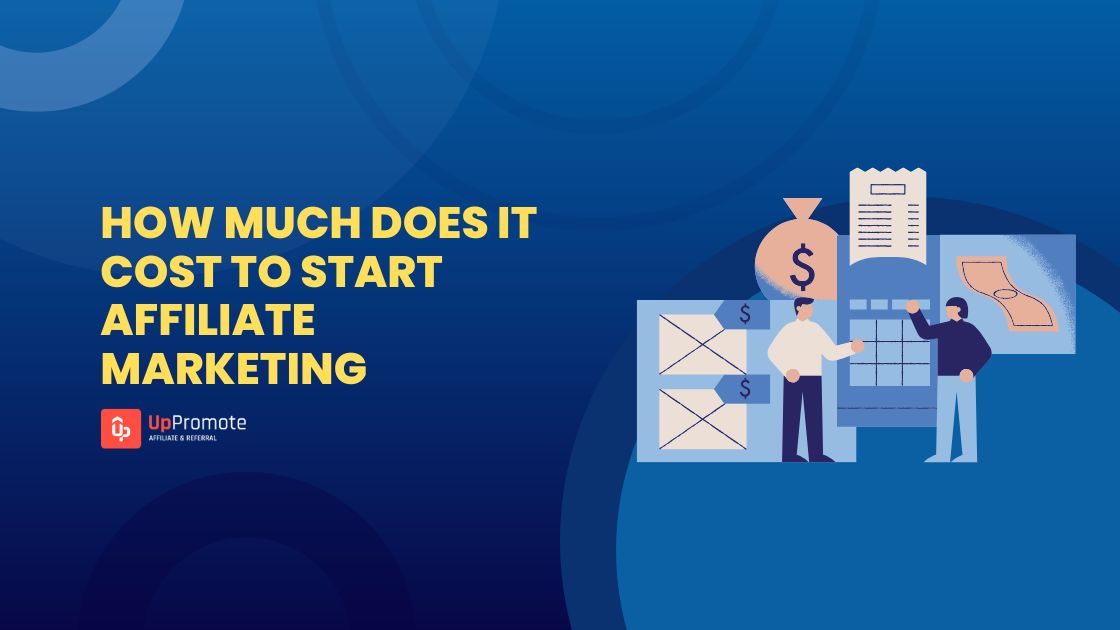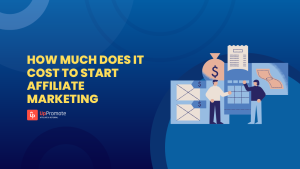You’ve been running your online business for a while now and are looking for ways to grow your brand or increase sales.
Affiliate marketing might be on your radar because it’s popular— 8 out of 10 business owners use this strategy (Rakuten), and you heard that it delivers an impressive ROI of $15 for every dollar spent (Authority Hacker).
But how much does it cost to start affiliate marketing?
The good news is that affiliate marketing has zero upfront costs. It’s a performance-based model, meaning you only pay when affiliates generate sales. However, to set up and manage your program effectively, you’ll need affiliate marketing software.
While many apps charge a fee, UpPromote, a top trusted affiliate software on Shopify, recommended by experts and used by over 115,000 customers worldwide, lets you start the app for free, making it easier for your small businesses to launch without financial stress.
While starting is free, running a successful program may involve some costs. Your spending depends on how you manage your program— your commission structure and the level of customization required.
In this guide, we’ll explain what affiliate marketing is and the key expenses involved to help you plan a sound budget.
The main costs of affiliate marketing to keep in mind include:
- Affiliate Management Platform Charges
- Affiliate Commissions
- Affiliate Payout Transaction Fees
- Affiliate Manager Salary
- Marketing Materials Cost
- Optional Additional Expenses
Plus, we’ll also share 4 tips to run your program more effectively and make the most of your affiliate marketing budget.
Read on to learn more!
What Is Affiliate Marketing?
Affiliate marketing is a revenue-sharing strategy where brands team up with individuals (called affiliates)—such as influencers, bloggers, or YouTubers—to promote their products or services.
Affiliates share these products or services with their audience through websites, social media, or other online platforms. When their promotions lead to sales, they earn a commission or reward. It’s a win-win: brands expand their reach and boost sales while affiliates earn income.
Let’s take a look at how it works:
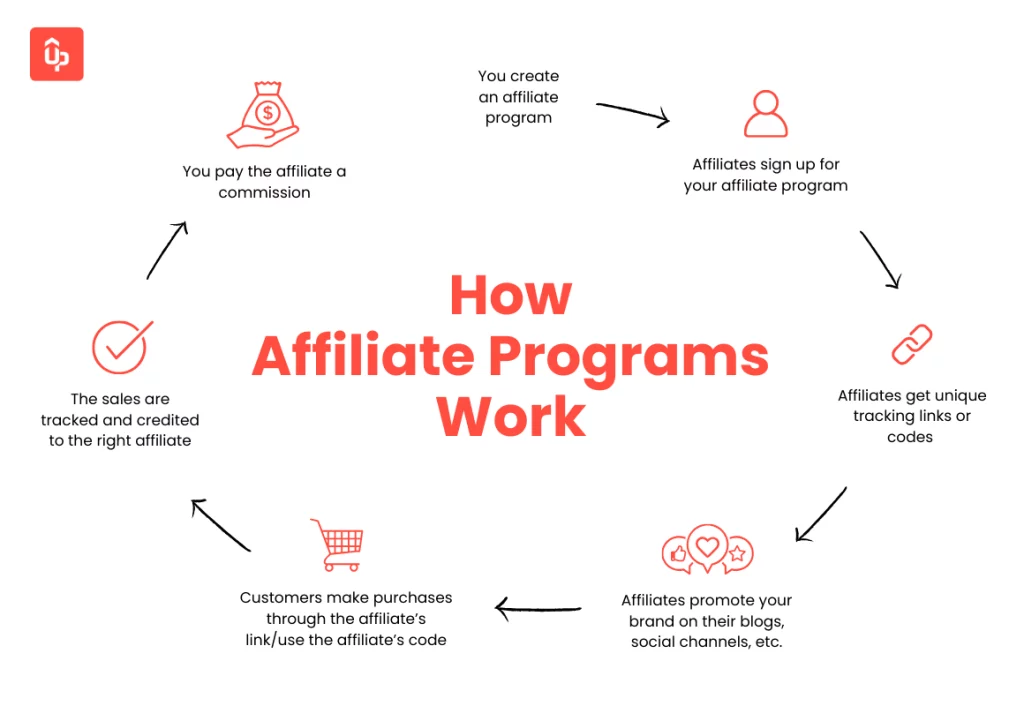 How Much Does Affiliate Marketing Cost?
How Much Does Affiliate Marketing Cost?
Starting an affiliate program can initially cost nothing, as it’s a performance-based model where you only pay commissions when affiliates generate actual sales. However, to run your program smoothly and effectively, there are some costs to consider. Knowing the key expenses helps you budget and allocate resources effectively.
Here’s a breakdown of the main affiliate marketing program costs you should prepare for:
Affiliate Management Platform Charges
The first step is deciding how to run your affiliate program. This choice plays a big role in shaping your affiliate marketing budget.
Here are the options you can choose from:
1. An Affiliate Marketing App
If you prefer to run an in-house affiliate program and have full control over everything, affiliate marketing software is the way to go. It helps you set commission rates, manage affiliates, and track performance data on your own.
For this option, you normally pay a monthly subscription fee. You can also purchase a year in advance because it’s usually cheaper this way.
The pricing differs from app to app and depends on which plan you choose to fit your business size, budget, and specific needs. However, a typical affiliate app costs way less than affiliate networks. Some platforms even offer free trials to check out before finalizing your decision, and then you can pick a suitable plan when you scale up.
For instance, if you open an online store on Shopify, you can try UpPromote, the #1 affiliate management software with a 4.9/5 rating and over 4,000 reviews on the Shopify App Store. The app offers robust features at affordable prices, starting at $0. So, you can jumpstart affiliate marketing without worrying about upfront costs.
Build affiliate programs in minutes with UpPromote—no coding involved!
2. An Affiliate Network
Working through a popular affiliate network, such as ShareASale, Clickbank, CJ Affiliate, and Impact, can be a good starting point. In this way, you can create and publish your affiliate campaign right on it, as well as get access to a large pool of affiliate marketers and influencers to save time recruiting partners.
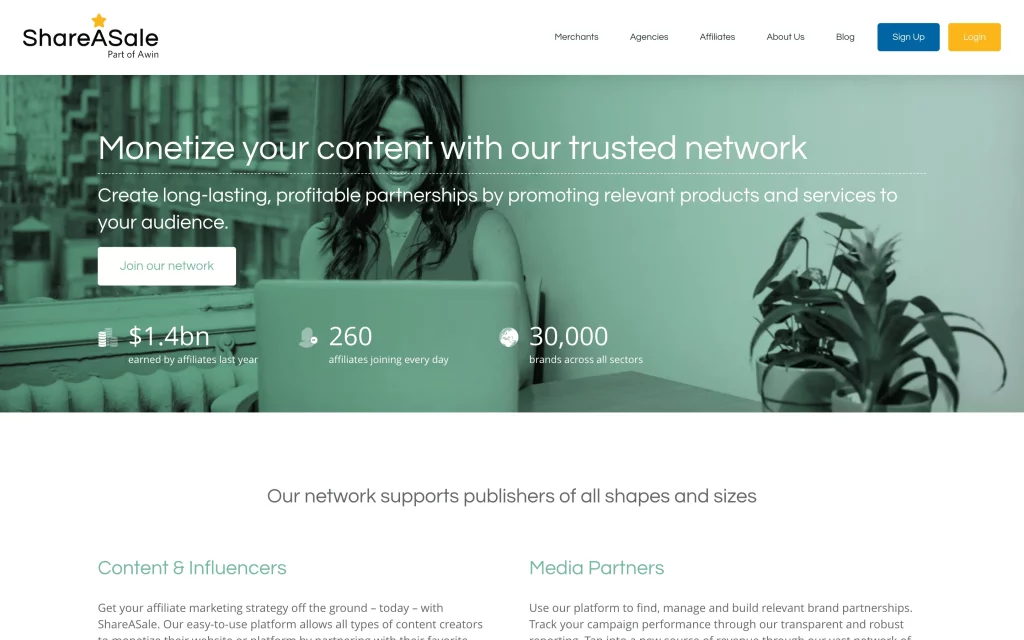 The cost varies across different networks. But you can keep in mind the following key components:
The cost varies across different networks. But you can keep in mind the following key components:
- Setup fee: Ranges from $500 to $2,000+ for account creation and system integration.
- Monthly maintenance fee: Typically falls between $30 and $500+, depending on the service package.
- Network fee: Takes 10% to 30% of the commission paid to affiliates.
Affiliate Commissions
Another cost of affiliate marketing is affiliate commissions. That’s the amount you pay your partners for their work. The good news is you only pay them when they deliver actual results, such as sales or leads.
There are some popular options for setting a commission rate for your affiliate campaign:
- Percent of sale: Affiliates earn a percentage of their total sales, e.g., 5% of the total order amount.
- Flat rate per item: Affiliates receive a set amount for each product sold, e.g., $5 per item.
- Flat rate per order: Affiliates get a fixed amount for each referral order, e.g., $15 per order.
- Tiered commission: Affiliates earn more as they achieve higher sales targets, e.g., 5% for sales under $500 and 10% for sales over $500.
And, of course, this rate depends on your niche and pricing model. Before settling on a number, research your niche’s benchmarks. Analyze competitors’ affiliate programs to ensure your rates are competitive. Offer as much or more than theirs, but don’t cut your profit margin.
Here’s a look at the typical affiliate commission rate ranges across various industries:
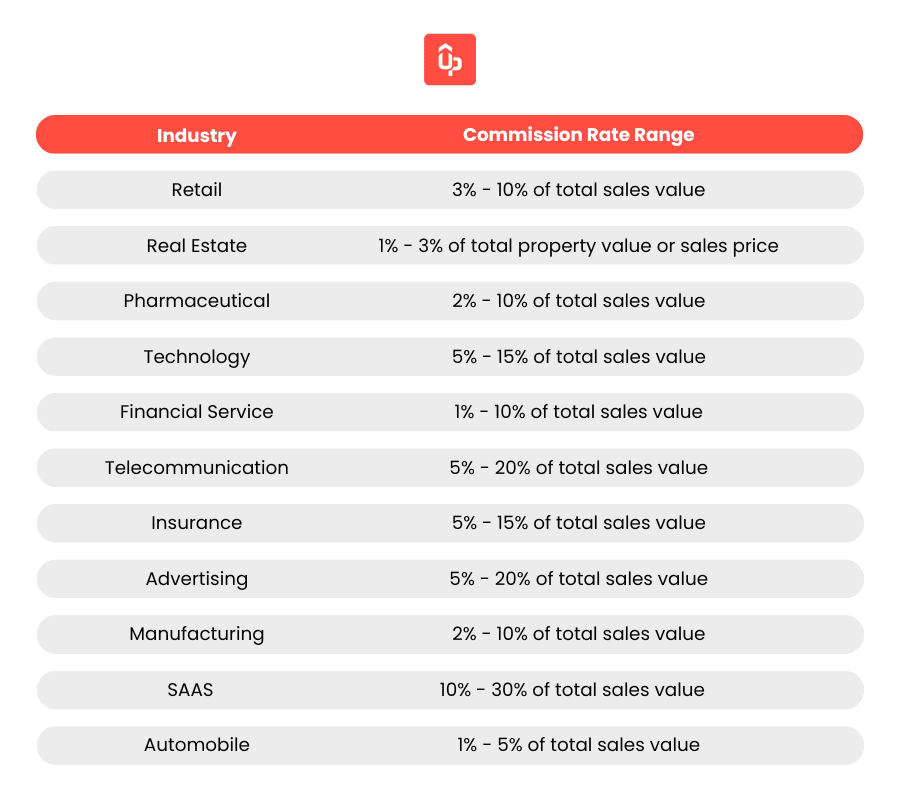
Affiliate marketing is competitive, so if you want your program to stand out and attract top affiliates, try offering tier-based commissions. It’s a smart way to structure your commission to make it more appealing than your competitors. Simply put, the more sales your affiliates bring in, the higher their rewards—keeping them motivated to perform even better.
For example, TréSkin, a favorite organic beauty brand in the USA, runs its affiliate program through UpPromote with a unique commission setup. The brand creates a 4-level commission structure, which looks like this:
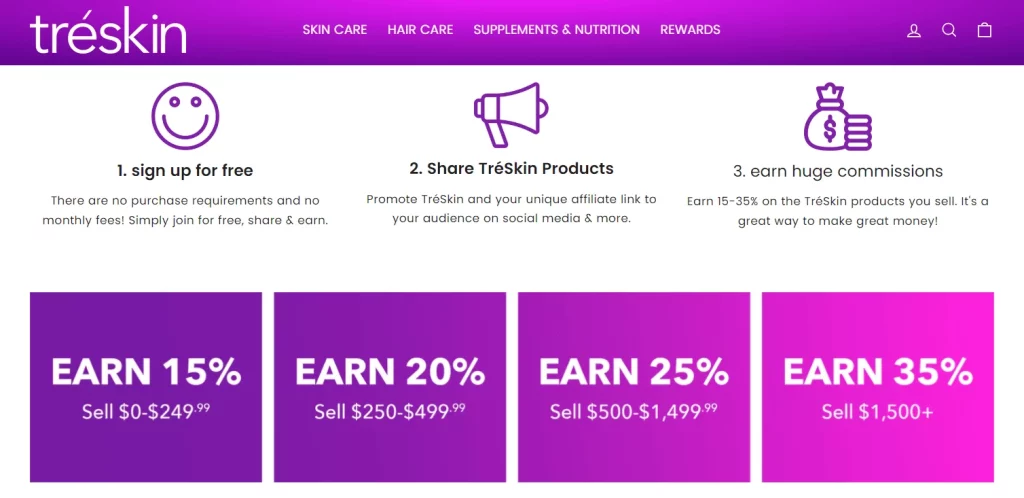
As such, TréSkin can quickly attract top beauty bloggers and influencers to promote their products, leading to impressive results with $120,000 in affiliate revenue in just 3 months.
Join 115,000+ UpPromote users to create smart commission structures that outshine your rivals.
Affiliate Payout Transaction Fees
Another thing to keep in mind is the cost of processing affiliate payments. These fees depend on the payout methods you choose. Make sure to plan for this so you don’t overspend and can send commissions to your affiliates on time.
For instance:
- PayPal: 2.9% + $0.30 per transaction.
- Bank transfers: Varies by provider and location.
- Other payment gateways: Additional fees according to the specific platform (e.g., Stripe, Wise).
To ensure you pay your publishers accurately and on time, think about using affiliate management software that automates commission calculations and payouts.
You can also set affiliate minimum payment thresholds to minimize the frequency of small transactions and encourage your partners to bring more referral sales to reach the required commission amount to receive their earnings.
If you use UpPromote, you can pay affiliates your way with peace of mind. It assists you in automatically calculating affiliate commissions and gathering affiliates’ payment details for easy sending payouts.
But it doesn’t stop there. You can easily schedule auto-payments with PayPal. Choose the payment date or cycle that fits your needs to ensure consistent and timely affiliate payouts.
You can also set flexible payout thresholds to match your financial goals. Pick a minimum commission to make sure affiliates achieve a specific amount before payouts. Plus, set a maximum payout limit to help you stay within budget.
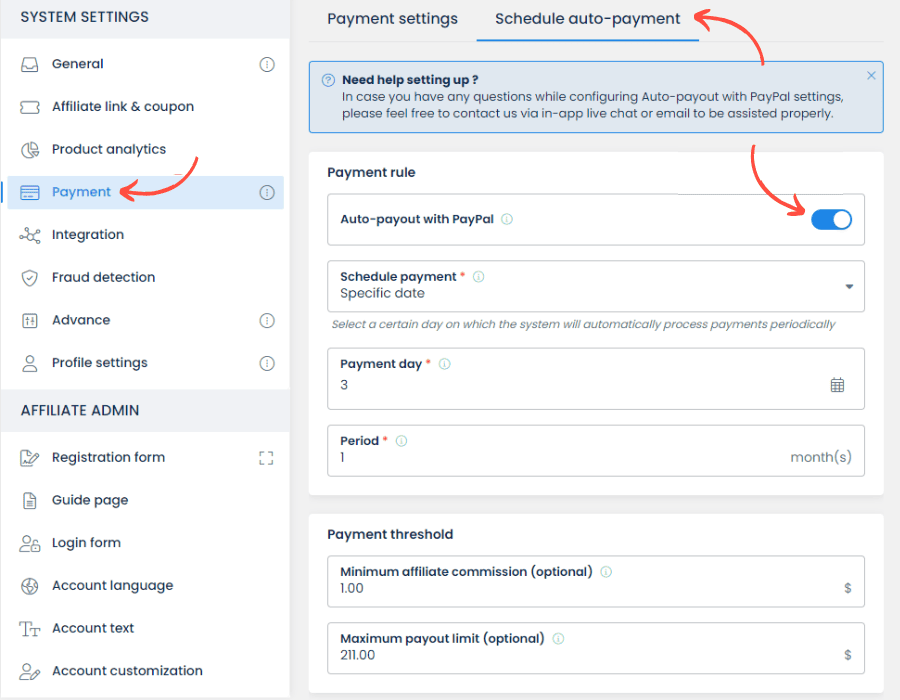
Easily schedule automatic payouts to your partners via PayPal—no more manual work, and you’ll never miss a payment to your affiliates again.
Affiliate Manager Salary
Post-launch affiliate program management is another expense to think about. You can either bring on an in-house affiliate manager or outsource the job to an agency, depending on what fits your business needs.
An affiliate manager’s responsibilities may include:
- Finding and recruiting affiliate marketers.
- Onboarding new affiliates.
- Monitoring affiliate performance and compliance.
- Building and maintaining relationships with affiliates.
- Providing ongoing support to affiliates.
If you hire an affiliate manager for your company, the average salary for this position can range from $40,000 to over $80,000 annually based on factors such as experience, location, and industry.
On the other hand, if you outsource these tasks to an agency, it can charge $1,000 to over $10,000 monthly, depending on the scope of services and the complexity of your affiliate campaign.
Marketing Materials Cost
To help your affiliates promote your products, create promotional assets for them to use.
Some common costs could include:
- Creative assets: They are images, banners, videos, social media templates, email copies, and other promotional materials affiliates will use on their websites or social media accounts. The cost of producing these assets can vary based on the tools you choose. For example, if you use Canva to design, you can create great-looking graphics without design experience, even for free.
- Landing page: Providing affiliates with custom landing pages can help them drive traffic, but it can come with extra design and development costs. Some businesses use third-party tools, while others rely on an in-house team to build them.
- Product samples: Sending free samples to affiliates for review and promotion (especially for physical products) is a great way to help them create authentic and engaging content. However, the cost of producing and shipping these samples can add up, particularly if you’re working with a large number of affiliates.
- Copywriting: Engaging and persuasive copy is key to helping affiliates turn potential leads into sales. You might need to hire copywriters to craft email templates, ad copy, or blog posts. Freelance rates are usually $50 to $200 per piece.
Optional Additional Expenses
The costs listed above are directly tied to starting an affiliate program.
You may also need to invest in other aspects, depending on the scale and customization of your program, to accelerate its success.
The list could include:
- Bonuses and incentives: Offer performance bonuses to affiliates who reach specific sales milestones, such as a $100 bonus for generating $1,000 in sales in a month. You can also run affiliate contests and reward winners with exciting prizes like gift cards, free products, or cash to boost engagement. Another option is to increase commission rates during high-sales periods, such as holidays or product launches, to deliver more sales.
- Affiliate training programs: Costs for creating tutorials or hosting webinars to educate affiliate partners.
- Events or meetups: These include expenses for joining networking events or conferences related to your niche or affiliate marketing. Such events are a great way to connect with potential affiliates and personally invite them to join your program.
- Ads to promote your affiliate campaign: You can run Google or social media ads to promote your affiliate program and its signup page, increasing visibility so potential partners can find it and apply.
4 Best Practices for Cost-Effective Growth
When you invest in affiliate marketing, you want to make sure every dollar is spent wisely and brings the best results.
Here are some tips to help you achieve just that:
Choose the Right Affiliate Tracking Software
Affiliate marketing software can make a big difference, whether you’re running a program for a small business or a large company. It helps you take full control of how your program is set up and managed.
To pick the right software for your brand, here are a few things to keep in mind:
- Ease of use and a simple interface
- Automated tracking and commission calculation
- Affordable pricing and the ability to scale
- Reliable customer support and training
- Support for multiple languages and currencies
Looking for software that checks all these boxes? UpPromote is worth trying.
It’s built to help businesses of any size succeed with affiliate marketing and is trusted by experts and over 115,000 users worldwide.
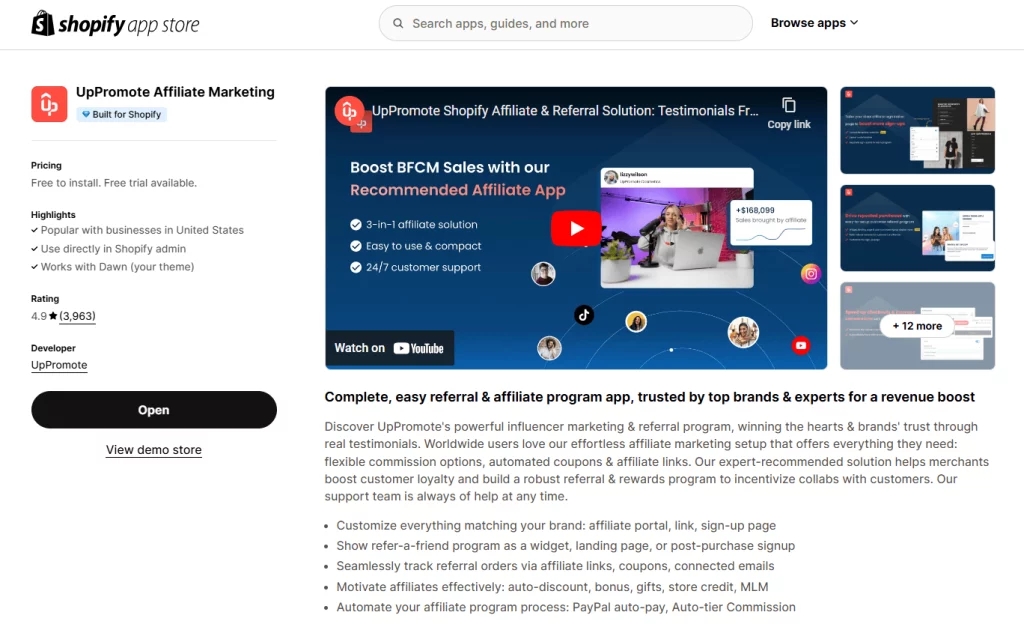
What UpPromote brings to the table includes:
- Reasonable and flexible pricing plans, starting with a free option.
- A user-friendly interface with built-in tooltips to make navigation simple.
- A quick and easy setup process to launch your affiliate program effortlessly.
- 24/7 customer support to assist with setup and make program management stress-free.
It takes less than 5 minutes to set up an affiliate program with UpPromote.
Recruiting High-Quality Affiliates
Recruiting the right partners to promote your products is essential for the success of your affiliate program. They can help you target the right audience and bring you quality referral sales.
If you wonder how to find best-fit affiliates, consider the following ways:
- Share your affiliate signup page on your website and social media. Running ads can help you attract more partners to join.
- Join trusted affiliate networks like ShareASale, Commission Junction, Rakuten Marketing, or UpPromote Marketplace. These platforms connect you with a wide range of active affiliates.
- Turn happy customers into brand ambassadors. A refer-a-friend program is a great way to make this happen.
- Search on Google and social media platforms like Instagram, LinkedIn, TikTok, X, Quora, and Pinterest. Use keywords related to your niche to find bloggers and influencers in your industry.
- Attend industry events and affiliate marketing conferences (like Affiliate Summit West/East or Affiliate Huddle). These are perfect opportunities to meet potential affiliates and build connections.
Whether you reach out to affiliates or they apply to join your program, it’s important to review their applications and backgrounds carefully. This helps you find those who are a great match for your brand.
Here’s what to check:
- Niche alignment: Affiliates who work in your niche are more likely to create content that connects with your target audience.
- Audience match: Think about your ideal customer—their age, location, and interests. Then, look for affiliates whose followers fit that profile.
- Experience: See which brands they’ve worked with before and how they promoted them.
- Content quality: Look at their posts, photos, and videos to make sure they’re engaging, original, and well-made.
- Engagement: Don’t just focus on follower numbers. Check for active likes, comments, and shares to see if their audience really engages with their content.
💡 Pro tip: Ask affiliates to include links to their websites and social media in their applications—just like Pure Dixie does.
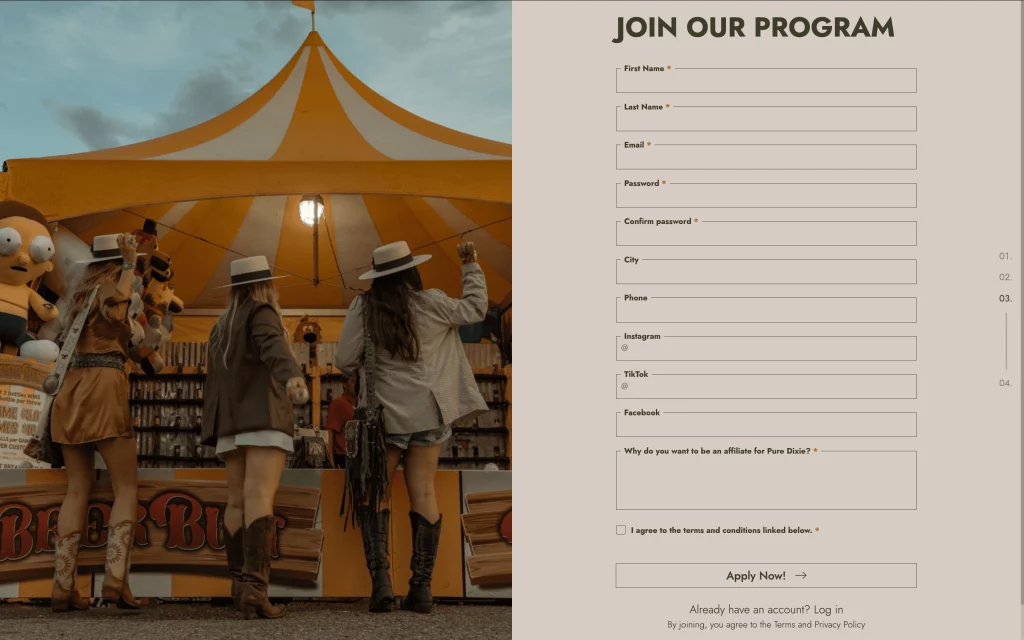
Monitoring Affiliate Performance Closely
To understand what’s working and what isn’t in your affiliate campaign and to determine if the results justify your investment, it’s essential to track performance data closely.
Focus on your goals and use key metrics like these to measure effectiveness, such as
- Clicks and traffic: Check how much website traffic each affiliate is bringing.
- Conversion rate: Keep track of the percentage of clicks that turn into purchases.
- Sales and revenue: Measure the number of sales and total revenue generated by affiliates.
- Average order value (AOV): Find out the average amount customers spend on orders made through affiliate links or codes.
- Return on investment (ROI): See how much profit your affiliate program makes compared to its costs.
- Customer lifetime value (CLV): Understand how much long-term value customers from affiliates bring to your business.
To measure these metrics effectively, it’s important to have a reliable affiliate management tool that gives you real-time data and detailed performance analytics & reports.
With UpPromote, you get a complete set of tracking features to help you know how your program is doing. You can easily see details like the number of affiliates, orders, commissions, referral sources, and referral statuses.
Plus, the app presents real-time reports in an easy-to-understand format with graphics, charts, and data tables.
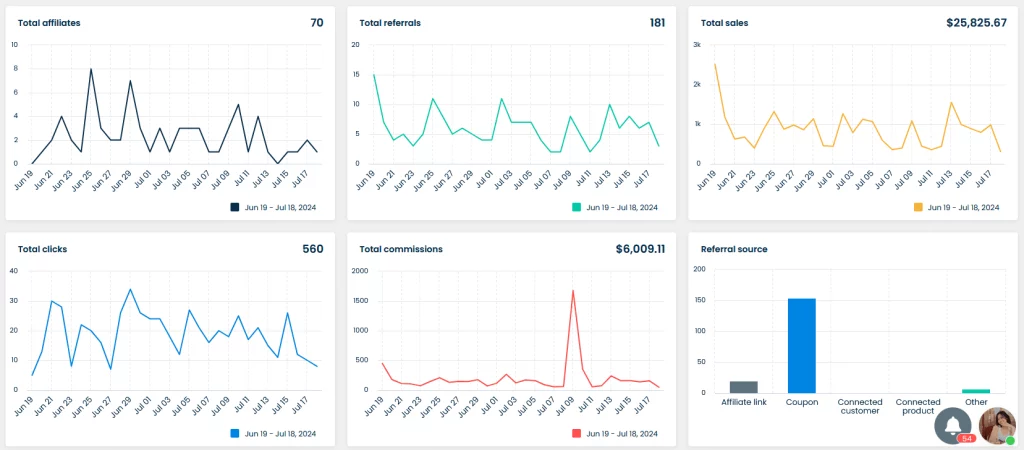
Holbrook Pickleball is a great example of how to make this strategy work successfully
The brand doesn’t just set a sales goal for its affiliate program and sit back, hoping partners will reach it. Instead, they stay actively involved, using UpPromote to monitor their ambassadors’ sales closely.

When an affiliate exceeds expectations, Holbrook shows their gratitude by sending gift packages to top performers using UpPromote’s gift feature. It’s a thoughtful way to thank them for their effort and commitment.
By tracking real-time data, Holbrook can send rewards at the right time, keeping affiliates motivated and excited to promote their products. And the results? An impressive 86% growth in affiliate revenue in just one year.
“We look at the analytics section all the time, like every single day. It’s really useful and helps us a lot in making insightful decisions about what to do next.”
Olivia
Holbrook Pickleball Marketing Manager
Optimizing Affiliate Campaigns Continuously
Keeping tabs on affiliate performance gives you real-time insights to improve your campaign. Continuously optimizing your program is also a smart way to make the most of your budget and achieve better results.
Based on the data, you can:
- Adjust incentives: Customize rewards based on affiliate performance and your goals.
- Run A/B testing: Experiment with different commission structures (like tiered commissions or special product commissions) to find out which works best.
Frequently Asked Questions (FAQs)
- What’s the average commission rate?
The average commission rate varies depending on what you’re selling.
Here are some common product categories, along with their typical affiliate commission rates:
- Beauty: Around 15%
- Clothing: Between 10% and 15%
- Food and drink: Typically 10% to 20%
- Health: Generally 20% to 30%
- Pets: Commonly 10% to 20%
- Computers and tech: Usually 15% to 20%
Think about your profit margin and what would motivate your affiliates while still being affordable for you.
- Are there free affiliate marketing platforms?
Yes, many affiliate marketing platforms offer free plans, but they often come with limited features. These can work well for small programs just getting started. Paid platforms, however, usually provide advanced tools like better tracking, reporting, and support, which can save you time and help when your program scales.
Take some time to research reliable platforms with good reviews and recommendations from experts and other brands to check out.
- How do I avoid unexpected costs in affiliate marketing?
Having a solid business plan is key to success in any industry, and affiliate marketing is no different. It helps you map out clear strategies to set up, run, and manage your affiliate program while making sure your budget is used wisely.
Making an affiliate marketing business plan before launching your program is highly beneficial. While it requires in-depth research and analysis to develop one tailored to your brand, it will ultimately prove valuable in the long run.
- When should I offer bonuses or incentives to affiliates?
Bonuses are a great tactic to keep affiliates excited and motivated. Think about offering them during:
- Seasonal sales like Black Friday or Christmas to boost traffic.
- Milestones like hitting a certain number of sales.
- Product launches to encourage affiliates to push new products.
These little extras show your appreciation and can encourage them to perform even better.
Final Words
If you’re thinking about using affiliate marketing to grow your brand and boost sales, it’s important to understand the key costs involved. This helps you create a clear budget and manage your program better.
Some common expenses include fees for an affiliate management platform, affiliate commissions, transaction fees, salaries for affiliate managers, marketing materials, and optional extras.
To get the most out of your investment and avoid unexpected costs, take time to research your industry and competitors, plan carefully before launching your program, and keep an eye on its performance so you can improve it as you go.


